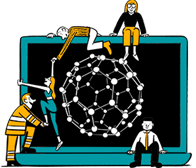
Visit Groz-Beckert in person and virtually at ITMA Asia
Abstract of US2008141730 Publicationdate: 19 June 2008 In order to reduce the impact speed of a latch ( 4 ) of a needle ( 1 ) in back position by reducing the acceleration effect originating from a half stitch ( 19 ), the upward jaw slope ( 8 ) of the needle ( 1 ) is subdivided into different regions. A first section ( 12 ) ascends at a relatively large acute angle gamma of, for example, up to 20 DEG , preferably 16 DEG . Just after the half stitch ( 19 ) has contacted the inside ( 14 ) of the

1st July 2008
Knitting Industry
|
Abstract of US2008141730
Publicationdate: 19 June 2008
In order to reduce the impact speed of a latch ( 4 ) of a needle ( 1 ) in back position by reducing the acceleration effect originating from a half stitch ( 19 ), the upward jaw slope ( 8 ) of the needle ( 1 ) is subdivided into different regions. A first section ( 12 ) ascends at a relatively large acute angle gamma of, for example, up to 20 DEG , preferably 16 DEG . Just after the half stitch ( 19 ) has contacted the inside ( 14 ) of the latch ( 4 ), said half stitch arrives on a second section ( 16 ) of the upward jaw slope ( 8 ). The second section ( 16 ) is a straight section which ascends at a smaller acute angle beta of, for example, only 14 DEG or less. Consequently, an acceleration effect from the half stitch ( 19 ) on the latch ( 4 ) is avoided over a wide pivot range of said latch. Preferably, this acceleration-free pivot range is at least 90 DEG , preferably greater than 110 DEG .
To view the full patent, click the link below.

Business intelligence for the fibre, textiles and apparel industries: technologies, innovations, markets, investments, trade policy, sourcing, strategy...
Find out more